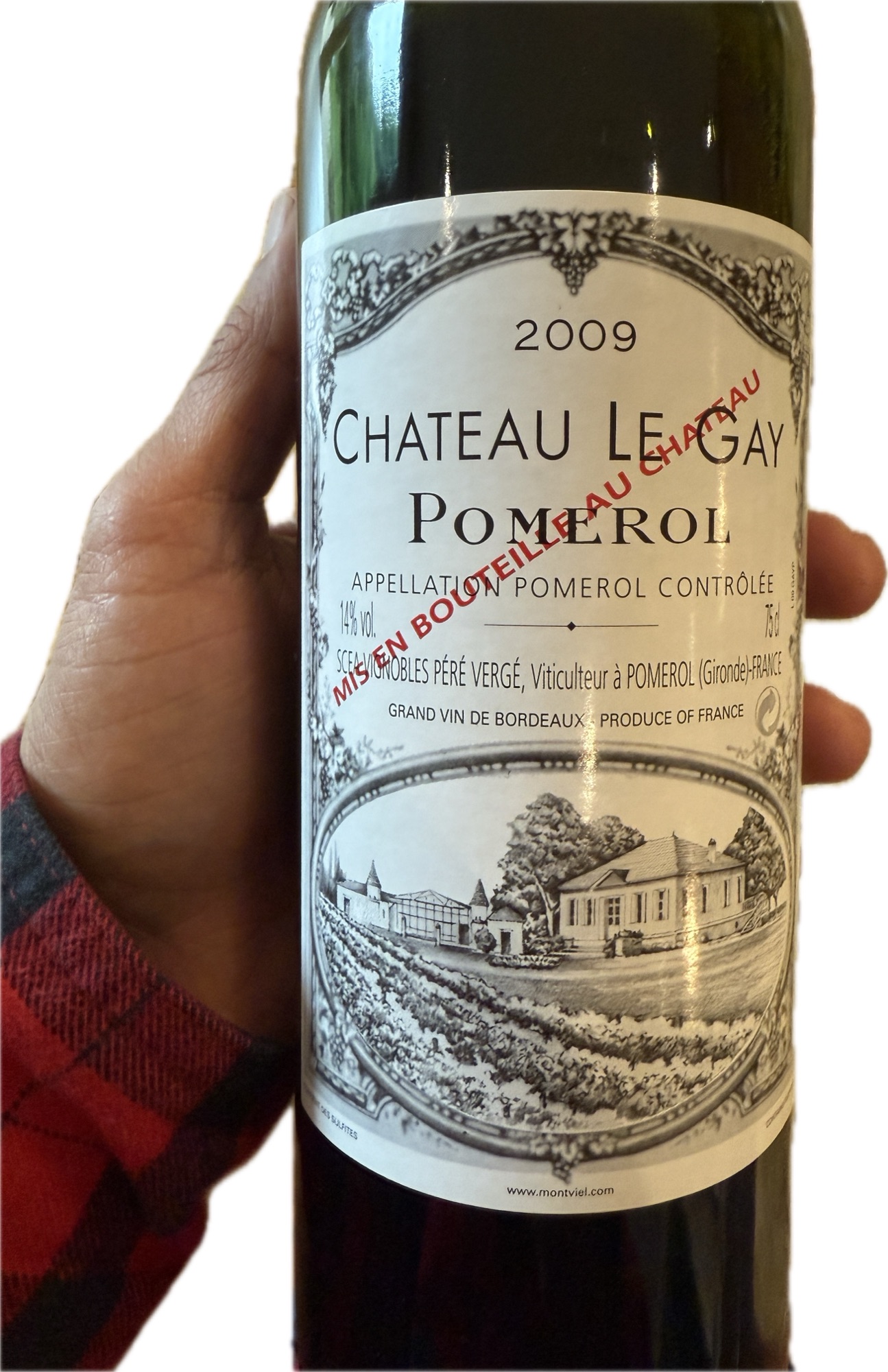Somehow wine glass makers have managed to convince us that buying wine glasses is an incredibly complex matter and that only the perfect glass will make it possible to enjoy your wine. This, for some, apparently necessitates a different glass for every possible wine (and some subcategories or sub-subcategories of wines too). You need not just a red glass but a burgundy, Bordeaux, Shiraz and Pinot Noir glass. One for Chardonnay, Chablis, and Riesling. Oh, and don’t forget port, sherry, champagne and Sauterne.
So if you bought a—let’s say conservative — four of each, you would have 32 glasses. And of course it goes up geometrically from there. Heaven help you if you have a dinner party for eight.
Realistically, I think you can get by with two types of glass and then add one more if you have a particular passion beyond red and white wine.
So how do you pick a glass? Let’s just quickly state that the purpose of the glass is to release and concentrate the aromas of reds and white, as well as present the wine in an attractive container that feels good to handle and drink from. Here are some very simple rules.
1. The base of the bowl should be bigger than the top—i.e. a kind of tulip shape (but wider) that helps release the aroma and then funnels those aromas together where your nose will be. They should be round. If you like those ones with a little angle pinch in them (see the Zalto glass below), go ahead. Supposedly, the little pinch helps aeration.
2. The base of a red glass bowl should be bigger than the white.
We could really stop here, since that’s all you really need to pay attention to. But you might go astray in a few other ways, so let’s go on.
3. They should be clear. No green cut glass. No cut glass at all. No colors at all. If you love crystal, have at it. But it’s not necessary.
4. They should have relatively thin glass. How thin? Well, they don’t have to be as thin as Zalto glasses, which break when you look at them. But then again, they shouldn’t be chunky like a cheap restaurant where the wine glass is designed to survive the dishwasher, not to enhance wine appreciation. A rolled glass lip is hideous and to be avoided.
I’m going to add a few more rules, not about the glass but about the wine.
6. Cool red wine to 60-65 F or 17-18 C. Too often red wines are drank or served by restaurants at “room temperature.” Italian restaurants are the worst, seemingly thinking that above the pizza oven is a picturesque place to store their wines, resulting in a sickly warm soup in the glass. I ask for an ice cube, much to the horror of wait staff. That “room temperature” refers to pre-modern rooms which were a lot cooler than 70F. So cool ‘em down to 60 F or so.
Whites are drank a little cooler, though fridge-cold is usually too low, so aim a little higher than that. Different whites sometimes need different levels of cooling, but let’s not get into that. If you’re interested, then check here.
7. Don’t overfill the glass. it makes it top heavy and doesn’t allow aromas to collect above the wine.
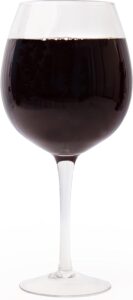
That’s it. Two glasses and as many of each as you need. If you only want one, pick a white glass on the larger side.
There, wasn’t that easy?
If you have two types of glasses and follow the rules above I guarantee you will get 95% of the pleasure of wine. You can probably get what you need at IKEA. Or any kitchen store. Stay away from restaurant supply places – they often flog the chunky types.
Now if you have particular passion for champagne (and who doesn’t), sherry, port, or Sauterne I suppose you could one more specific glass for your favorite. But I think you’ll be fine with your white wine glass for all the above.
Some rapid fire questions
- Coupe or flute for champagne? I prefer a coupe as you can get the beautiful champers aromas better for the short time you’re drinking it, but it’s your choice. Your white wine glass will also work fine.
- Square glasses? No. Just no. Same for anything with a design, little metal thingys on the glass or etched designs.
- Stemless glasses? Fine, as long as they have the shape mentioned above. I’m not crazy about them because they get smudged and interfere with seeing the wine – your hands may also warm white (or red) wines. But they do go into the dishwasher more gracefully.
- Clear plastic wine glasses? Poolside, lakeside, for picnics, in fast moving boats or planes, the ones made from poly carbonate, and adhering to the guidelines above are good and a great addition to your wine glass assortment. Just don’t use them inside, as they lack the weight and the – I don’t know – je ne sais quoi – of real glass.
Now for some examples of glasses
The famous Zalto (this is their Bordeax glass). For many, this is the glass to have or aspire to. This $75 glass has the famous pinch curve at the bottom which has been widely emulated. This particular Zalto is one that was caught in the wild – in domestic captivity they are usually snapped off at the stem, because they’re so delicate. They’re fine glasses. I’ve paid for and broken many.
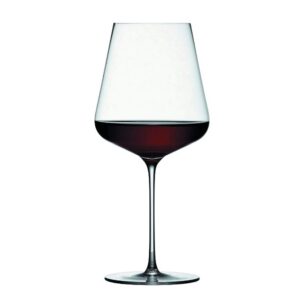
This Ikea version is $4.99. As long as the glass is not too thick (it doesn’t look it), then you’d be fine. Although notice the Zalto has a narrower mouth.

This is from Crate and Barrel. About $10 a glass. It has the more traditional red wine, shape. This is what decent red wine glasses looked like before all the Zalto proliferation started, and they are still just fine.

This is the dreaded cheap restaurant glass – the Paris goblet. It breaks several rules – the mouth is a wide as the bowl, and the glass is thick as all heck. It may have a rolled glass lip too, which is particularly annoying. Perfect for throwing around and use in commercial dishwashers; hopeless for wine drinking.
However, (small voice), I do have a nostalgic memory of drinking Beaujolais and cheap Cotes du Rhone out of these glasses in Paris cafes in my 20s. They were also used in British pubs, with four ounce volume markings.
For a Beaujolais nouveau with very little aroma development I suppose they’re good, but they don’t belong in your home. If you insist on buying them (maybe you’re making a Paris themed café in your basement) then don’t pay more than $12. Per case I mean.
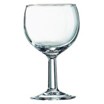
Finally this is the crème de la crème, the capo de capo, the Josephine collection from Zalto. They had to find a way to raise the price from $75 so that little dimple thing was added to make swirling your wine more aerating. Uh – huh. $100 a crack.
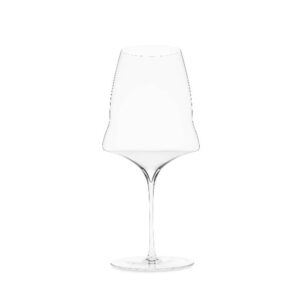
All the above are red wine glasses. For white wine glasses, they would look pretty much the same but would have a narrower bowl. Some manufacturers make a “universal” glass midway between the red and white, but I prefer to have a separate white and red glass. However, when I’m serving a large crowd, everyone gets the white glass, since I have lots of those.
Here are the glasses I use
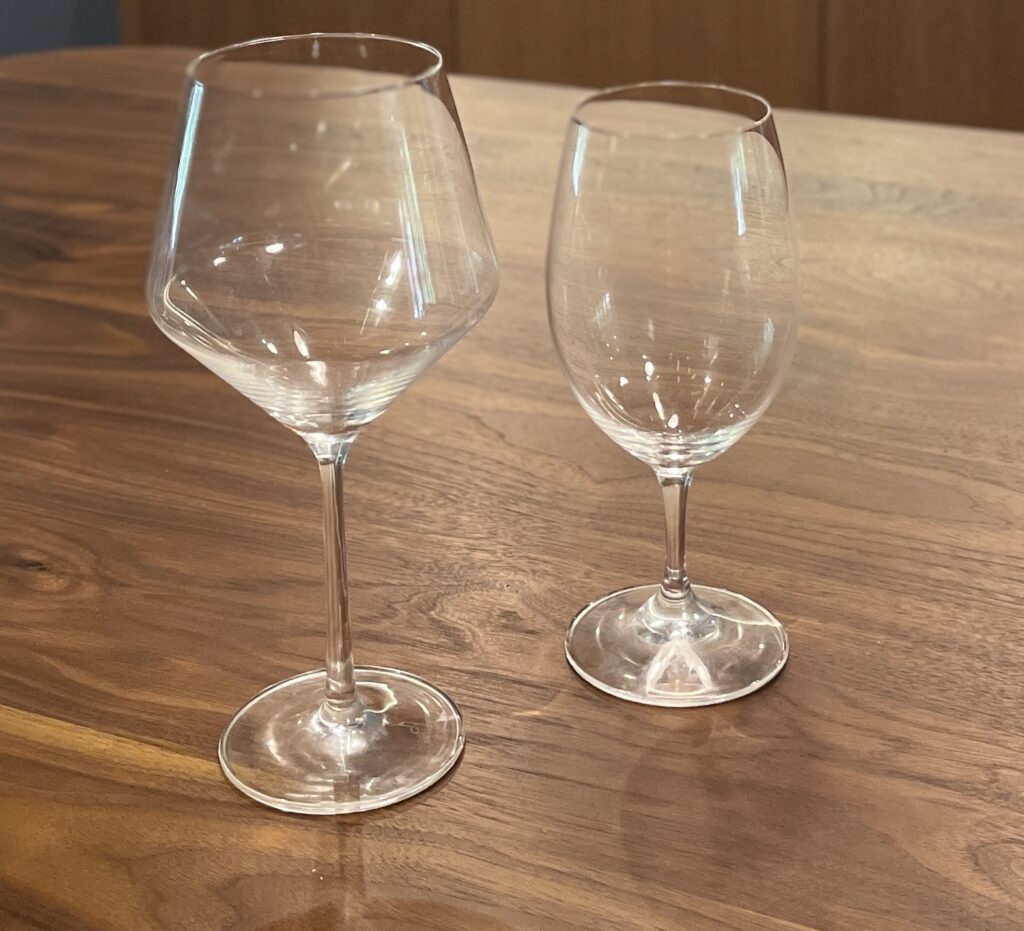
Left: For reds (and sometimes whites), Schott Zwiesel Bourgogne Glass. Right: White and almost anything else, Riedel Ouverture. It’s actually a red wine glass, but good for whites, champagnes, even port, and I use it kind of like a a “Universal” glass.
Enjoy!

